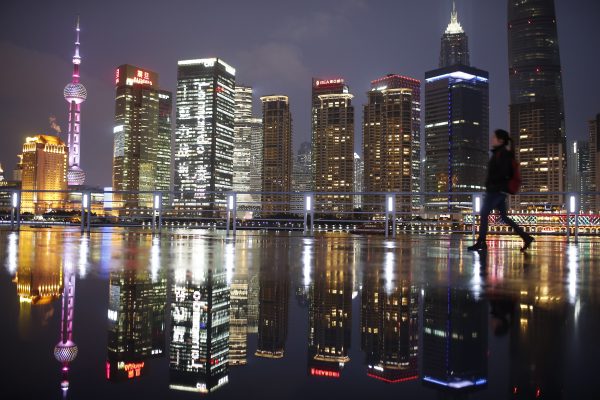In two major Asian economies — China and India — more financial liberalisation and market opening still lie ahead. The Chinese financial system is still largely state-controlled. Government policy and administrative guidance are extensive. Directed lending was heavily used in the depths of the global financial crisis (GFC) to offset the impact of external volatility and uncertainty. Bad loans have since been piling up on banks’ books. There are many possible scenarios for Chinese finance, ranging from bank failures to a Japanese-style malaise.
These concerns are offset somewhat by arguments that the debt build-up is mostly held within China, where the savings rate is very high. Even so, loans to state-owned enterprises (SOEs) are numerous, and often to chronically unprofitable ‘zombie companies’.
What is not at issue are the potential impacts on China’s international trade and investment footprint. The slowing economy has been associated with a surge of deals by corporate China, both mergers and acquisitions and greenfield investments.
This surge in outward investment has signalled some of the problems and risks associated with deeper Chinese financial integration. Since 2012, reported Chinese merger and acquisition activity in the United States and Europe has risen at very rapid rates. Some of these transactions are initiated by large, indebted enterprises, such as the highly leveraged SOE ChemChina’s bid for Swiss-owned Syngenta.
Domestic financial market development is a work in progress. Market forces determine interest and, to an extent, exchange rates. But as yet, there are few signs that the state will reduce its ownership — and with it, directed lending and moral hazard — of the five big banks.
Indian financial liberalisation is moving at a slower pace. One reason is that India passed through the GFC relatively unscathed due to capital controls and the small sizes of external linkages, which slowed the impetus for reform and opening. Although they have been eased in some areas, foreign-investing firms continue to face restrictions in many traditional industries.
Domestic financial development in India lags. The country’s financial system remains a hybrid, allowing market forces to operate but retaining high levels of government intervention and state ownership. The corporate bond market is heavily regulated and tiny in size. Equity markets are open and well-regulated, but capital controls still govern the flow of foreign funds into the debt market.
Many key supply-side restrictions remain to be tackled in most states, including land acquisition laws and the successful introduction of a national GST. Restrictive labour laws have limited firm size and formal sector employment.
As the Chinese and Indian cases make clear, maintaining the momentum of economic reform in developing countries requires movement on several fronts — financial sector reforms cannot be pursued in isolation from those in the real sector. It is important to understand the connections between policy strategies, hence the analysis of the relationship between financial reform and export sophistication.
Deeper understanding of this relationship is timely in view of concerns about slowing global growth: Asian growth can contribute to global growth by encouraging innovation and productivity growth. Many countries in the region are focusing their growth strategies on climbing regional value chains by bringing about structural changes in their economies. Does financial liberalisation help or hinder this goal?
There are several ways in which under-developed financial markets might impede efforts to increase export sophistication. Exporting products requires firms to pay large fixed costs of market exploration and development. It is reasonable to expect that only very profitable firms, or firms with secure access to financial markets, would be likely to enter sophisticated export markets.
Developed financial markets, in that sense, can be considered as somewhat analogous to factor endowments in trade. Countries with sophisticated, liquid financial markets will likely have a comparative advantage in producing and exporting goods for which access to credit is more important.
What about the sequence of financial reform? It is generally accepted that for reasons of macroeconomic stability, it is preferable to open the capital account only as the domestic financial system is strengthened and modernised. Sequencing of regulatory reforms governing domestic and international financial flows may be important for export sophistication — such sequencing could affect the ability of financial institutions to allocate credit to high-productivity firms.
These results are consistent with the following message for policymakers: developing the capacity and sophistication of domestic financial markets can yield positive results for upgrading export baskets to more sophisticated, higher value-added product lines.
Correctly sequencing future reform could be of help to China and India as they seek to move into markets with higher value-added products, hence climbing regional value chains and maximising the real economy gains from reforms.
Wendy Dobson is Professor and Co-director at the Rotman Institute of International Business, University of Toronto.
Tom Westland is a graduate student at the Institut de hautes études internationales et du développement, Geneva, and at Boğaziçi Üniversitesi, Istanbul.
This article appeared in the most recent edition of the East Asia Forum Quarterly, ‘Towards Asian integration‘.

